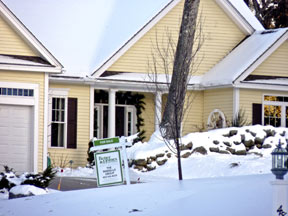 |
23 Years as Boston Celtics Photographer. Experienced in All Aspects of Photography. |
 This is where I make my books! Steve Lipofsky |
|---|
 |
23 Years as Boston Celtics Photographer. Experienced in All Aspects of Photography. |
 This is where I make my books! Steve Lipofsky |
|---|
| Home | Photography for Hire |
Classic NBA Photos & more |
Event Photos | PHOTO ART for home office and gifts |
Peterborough NH |
|---|
Focal Length or Zoom Here, we are talking about the magnification of the lens. How close it will bring a far away object and also how many of your relatives you can fit into a picture in a small room. You will see the focal length of a camera expressed in mm (millimeters), although mostly, you will see this expressed as a zoom ratio IE: 24x, 16x, etc. The number that you want to pay attention to is the 35mm equivalent focal length, such as 28mm - 400mm. 50mm is "normal" magnification, about what your eyes see. A lower number, such as 28mm is considered wide angle. You will see a wider view of a mountain range, fit more people into a photo without backing up (in a small room, you can't back up), and take some neat photos with a subject in the foreground against a cool back ground. A higher number, such as 400mm is on the telephoto side. Think telescope. This will bring your subject closer. Instead of your kid looking like a little mouse on the soccer field, he/she will fill up the photo. Try to select a camera that is at least 28mm at the wide end. This is a great focal length for group photos, landscapes, etc. Your telephoto choice is more personal. How much telephoto do you need? There is usually a trade off that will include higher price, a bigger camera, lesser image quality, or some combination thereof. Around 28mm - 120mm is a nice range. 120mm is great for portraits and cameras in this range will likely be compact, low priced and have good image quality. That being said, if you care about shooting sports, birds, or really need to bring distant subjects closer, you'll want to consider 300mm or more. |
||
 27mm |
 129mm |
 486mm |
Anti Shake (or image stabilization) If you're considering a lens with a long focal length (see above), this is a feature worth having. The longer, the focal length, such as 300mm, 400mm, 600mm, the more the natural jitter of your hand is magnified, which can lead to a blurry photo. Anti shake helps to compensate for this jitter and allows you take take better photos in with your telephoto and in lower light. |
||
GPS Built in GPS is a cool feature. It will embed the location where your photo was taken. It's especially useful if you'd like to find that place again.
|
||
Megapixels Don't get too caught up in how many megapixels a camera advertises. Don't assume that more is always better. It's hard to find a camera these days with less than 10 megapixels. and that is quite enough for most people. Sometimes a higher number can mean a noisier (grainier) photo. Feel free to email if you have a question about a particular camera. |
||
Email your questions or comments to Steve at cavics@aol.com Much more information will be added regularly, especially in response to requests. |
||